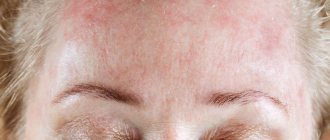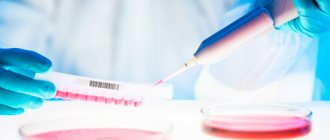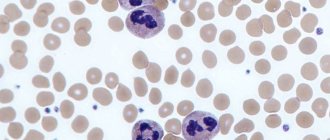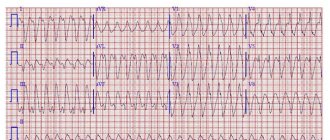(When placing an order in the first half of the current day)
Home → Pulse oximeters → Pulse oximeters - oxygen norm in adults and children
Home (13) Professional (5) Children's (3) Finger (17) Wrist (17) With verification (17) Portable (17) Stationary (17) ARMED (3) ChioceMMed (6) All pulse oximeters (17)
The normal values of pulse oximeters correspond to the values of blood oxygenation and pulse rate in a healthy person.
Pulse oximeters: blood oxygen saturation rate and heart rate
In medicine, saturation is the amount of oxygen contained in the blood, or more precisely, the percentage of oxyhemoglobin to hemoglobin. The norms for measuring saturation (SpO2) with a pulse oximeter are 96-98%. A decrease in this indicator to a level of less than 94% indicates disorders in the body, and a SpO2 value less than 90% is a signal for taking urgent action and oxygen therapy. Causes of falling oxygen levels in the blood:
- disruption of lung function and insufficient oxygen supply from the air;
- decrease in the amount of hemoglobin in red blood cells;
- pathologies of cardiac activity.
During the measurement, the pulse oximeter records changes in the volume of blood vessels corresponding to pulse impulses. Usually there are 60-90 pulse beats per minute. If the heart rate is higher, this may indicate hypertension, neurological disorders, oncology, heart disease, etc. A slower pulse can signal hypotension, stomach ulcers, hypothyroidism, and heart attack.
Pulse oximeters: norms for children and adults
The age of the patient plays a significant role when performing pulse oximetry.
Adult and children's standards for oxygen levels in the blood and heart rate are different. Newborns have little iron in their bodies and their lungs are not yet developed. Therefore, in infants, the SpO2 value fluctuates between 92 and 95%, and this is not a consequence of pathology. And in premature babies, saturation can be reduced to 82%. But such children are provided with artificial ventilation immediately after birth in order to maintain the oxygen supply to the body at the proper level.
The heart rate in the first weeks after birth averages 135 beats per minute. As you grow older, this figure decreases and by the age of 15 the average number of pulse beats per minute is 77.
You can get normal pulse oximeter readings if they are not affected by:
- movement, shaking;
- bright lighting;
- severe anemia;
- vascular spasm;
- arrhythmia.
All pulse oximeter models on the market accurately determine SpO2 and heart rate. Absolute accuracy is impossible; all instruments have an acceptable error. So, for Armed pulse oximeters it is 2-3% for saturation and 1 beat per minute for pulse rate. Such devices and similar portable models that are worn on the finger make it possible to fairly objectively assess the condition of the patient’s body. [td]
References
- Lifshits, V.M., Sidelnikova, V.I. Medical laboratory tests. - M.: Triad X, 2007. - P. 265-271.
- Sukhanova, G.A., Serebrov, V.Yu. Biochemistry of the cell. - Tomsk: Magician, 2000. - P. 88-150.
- Nagornaya, N.V., Chetverik, N.A. Oxidative stress: impact on the human body. Clinical lectures, 2010. - pp. 140-145.
- Hlavati, M., Tomic, S., Buljan, K. Total Antioxidant Status in Stable Chronic Obstructive Disease. Int J Chon Obstruct Pulmon Dis, 2020. - Vol. 15. - P. 2411-2419.
How to measure
Today it is quite easy to measure blood saturation. There are special portable devices - pulse oximeters, which are put on your finger and show the result in a matter of minutes. They also measure a person's heart rate.
A decrease in oxygen levels is fraught with the development of hypoxia and a general disorder. After all, oxygen is a necessary nutritional element for all systems and organs of the human body.
Do the color of manicure and gel polish on nails affect pulse oximeter readings? More details
What else is prescribed with this study?
8-OH deoxyguanosine
13.3. Ven. blood 7 days
2,670 som Add to cart
Glutathione peroxidase (GTP)
13.2. Ven. blood 9 days
1,710 som Add to cart
Clinical blood test with leukocyte count and ESR (with microscopy of a blood smear to detect pathological changes) (venous blood)
3.9.1. Ven. blood 1 day
550 som Add to cart
Superoxide dismutase (SOD)
13.1. Ven. blood 9 days
2,050 som Add to cart
Why do you need to know your blood oxygen level?
You may not have thought about whether you have enough O2 in your blood before. Coronavirus has made this issue urgent. COVID-19 is one of the most common causes of respiratory failure. The new virus is extremely insidious: the organs lack oxygen, but the body does not give alarm signals. The disease can occur without shortness of breath, cough or fever. When symptoms of lung damage appear, it is already too late.
To reduce your risk, you need to keep your blood oxygen saturation levels under control. This way you can identify Covid in its early stages and begin treatment.
It is recommended to regularly check saturation during the season of respiratory viral infections, for cardiovascular and pulmonary diseases, diseases of the endocrine system, obesity, and anemia.










